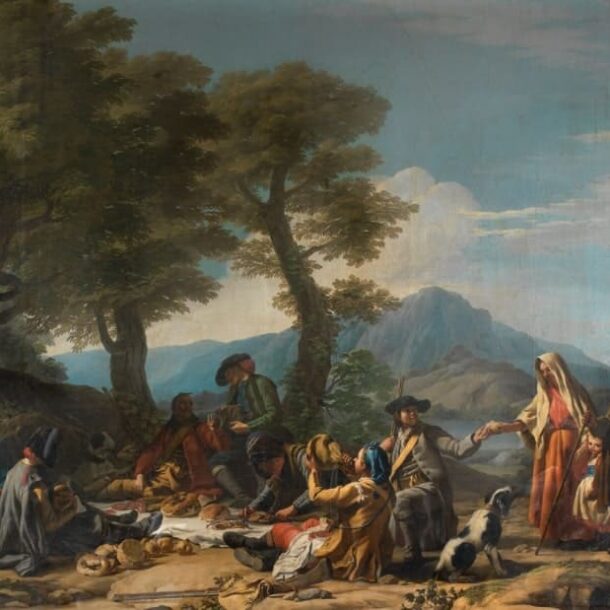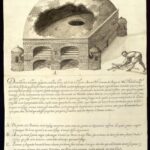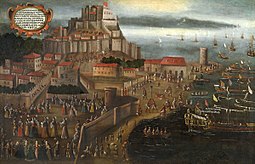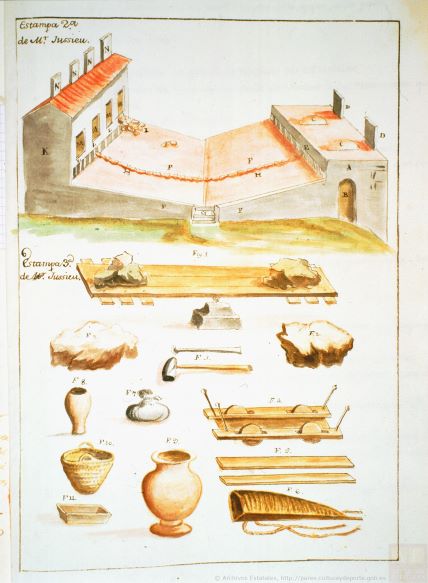
Quicksilver, or mercury, is a metal obtained from the mineral known as cinnabar, which was decisive in the processing of silver, and was therefore of vital importance to the miners of New Spain. The extraction of quicksilver was a monopoly of the Crown and was mainly supplied from the Peninsula, which sometimes caused shortages and difficulties, mainly due to wars and complications in maritime transport. It was in the 16th century when Bartolomé de Medina introduced the method of amalgamation with quicksilver, a method that was very successful and which revolutionised American metallurgy. This technique spread to all the mining centres in the Americas until the 19th century. The mines from which the Crown mainly supplied this metal were Almadén, in Spain, and Huancavelica, in Peru. During the 17th century in New Spain, despite some difficulties in the exploitation of the mercury mines existing in this viceroyalty, such as the lack of manpower, the scarcity of knowledge and metallurgical preparation or the lack of capital to cover the costs, some of them were exploited.
Collection: Images
Project: 2. Social and economic impact of technological revolutions in Europe., 3. Rural world and urban world in the formation of the European identity., 9. Travels and travelers: economic, social and cultural connections.
Chronology: XVII, XVIII
Scope: Baccalaureate, University
Link: http://pares.mcu.es/ParesBusquedas20/catalogo/show/21809?nm
Resource type: Image
Format: Paper
Source: Archivo General de Indias. Mapas, planos, documentos iconográficos y documentos especiales. Minas.
Language: Spanish
Date: 1649
Owner: María del Mar Felices de la Fuente (Modernalia)
Identifier: ES.41091.AGI//MP-MINAS,55
Copyright: MECD. Archivos Estatales (España).
Abstract: The image shows the layout of one of the twelve reverberatory furnaces for quicksilver metallurgy that were built in the Calle de Santa Ana of the Real de minas de Azogue de Nuestra Señora de la Concepción in New Spain. These furnaces were made on the outside of brick and lime, to resist water, and on the inside of brick and clay, to preserve the fire. The picture explains how they worked.
Image
Tags







